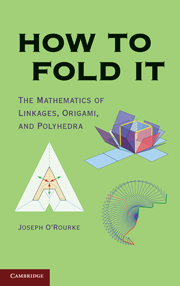2 - Straight-Line Linkages and the Pantograph
Published online by Cambridge University Press: 05 June 2012
Summary
The robot arm / polygonal chain we studied in Chapter 1 is among the simplest of linkages. It is fundamentally linear – one link after another. Creating cycles (loops) in a linkage constrains its possible movements and simultaneously renders it more useful and more difficult to analyze. More useful because constrained movements can form the basis of a variety of mechanisms, as we will soon see. More difficult to analyze because the motions of joints are determined by several interacting constraining equations. In this chapter, we recount the pursuit of a linkage that can “draw a straight line,” and analyze the simple but useful pantograph linkage using vectors. There are fewer theorems and more “stories” in this chapter – something of an interlude for the reader between the heavy lifting in the previous chapter and that to come in the next chapter.
Straight-Line Linkages
Although linkages have been used since medieval times – in saw mills, in mechanical clocks, in looms, in printing presses – their golden age was the eighteenth century, driven by the demands of the steam engine, which powered the Industrial Revolution. One particular need was for a mechanism to constrain a piston rod to move along a straight-line path within the steam-pressured hydraulic cylinder; see Figure 2.1. Any deviation from straight-line motion induces lateral forces that quickly wear down the rubbing parts. This led James Watt, after whom the unit of power (wattage) for a light bulb is named, to patent in 1784 the clever 3-bar linkage shown in Figure 2.2(a).
- Type
- Chapter
- Information
- How to Fold ItThe Mathematics of Linkages, Origami, and Polyhedra, pp. 24 - 38Publisher: Cambridge University PressPrint publication year: 2011



